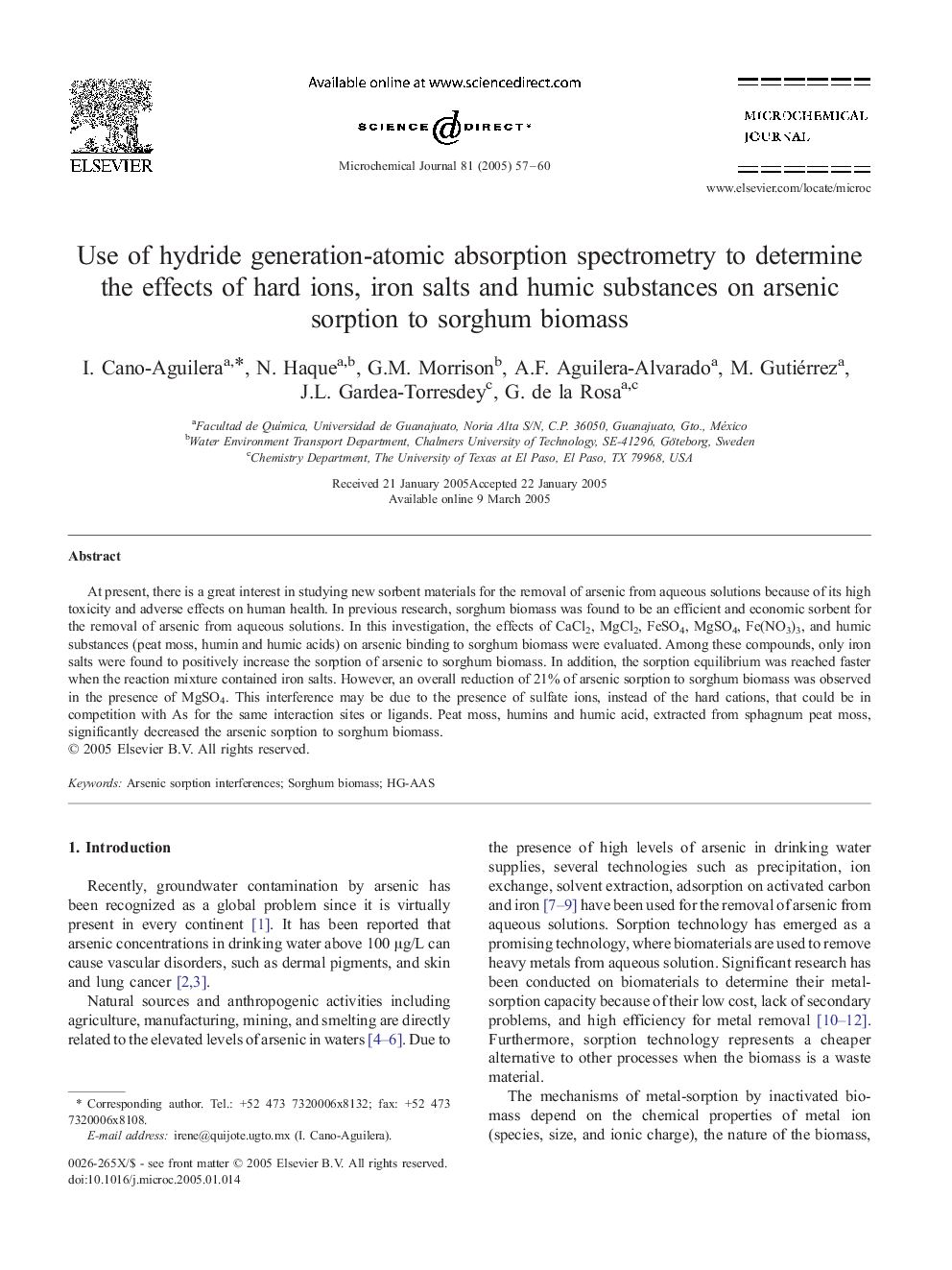| کد مقاله | کد نشریه | سال انتشار | مقاله انگلیسی | نسخه تمام متن |
|---|---|---|---|---|
| 10557219 | 968496 | 2005 | 4 صفحه PDF | دانلود رایگان |
عنوان انگلیسی مقاله ISI
Use of hydride generation-atomic absorption spectrometry to determine the effects of hard ions, iron salts and humic substances on arsenic sorption to sorghum biomass
دانلود مقاله + سفارش ترجمه
دانلود مقاله ISI انگلیسی
رایگان برای ایرانیان
کلمات کلیدی
موضوعات مرتبط
مهندسی و علوم پایه
شیمی
شیمی آنالیزی یا شیمی تجزیه
پیش نمایش صفحه اول مقاله

چکیده انگلیسی
At present, there is a great interest in studying new sorbent materials for the removal of arsenic from aqueous solutions because of its high toxicity and adverse effects on human health. In previous research, sorghum biomass was found to be an efficient and economic sorbent for the removal of arsenic from aqueous solutions. In this investigation, the effects of CaCl2, MgCl2, FeSO4, MgSO4, Fe(NO3)3, and humic substances (peat moss, humin and humic acids) on arsenic binding to sorghum biomass were evaluated. Among these compounds, only iron salts were found to positively increase the sorption of arsenic to sorghum biomass. In addition, the sorption equilibrium was reached faster when the reaction mixture contained iron salts. However, an overall reduction of 21% of arsenic sorption to sorghum biomass was observed in the presence of MgSO4. This interference may be due to the presence of sulfate ions, instead of the hard cations, that could be in competition with As for the same interaction sites or ligands. Peat moss, humins and humic acid, extracted from sphagnum peat moss, significantly decreased the arsenic sorption to sorghum biomass.
ناشر
Database: Elsevier - ScienceDirect (ساینس دایرکت)
Journal: Microchemical Journal - Volume 81, Issue 1, August 2005, Pages 57-60
Journal: Microchemical Journal - Volume 81, Issue 1, August 2005, Pages 57-60
نویسندگان
I. Cano-Aguilera, N. Haque, G.M. Morrison, A.F. Aguilera-Alvarado, M. Gutiérrez, J.L. Gardea-Torresdey, G. de la Rosa,